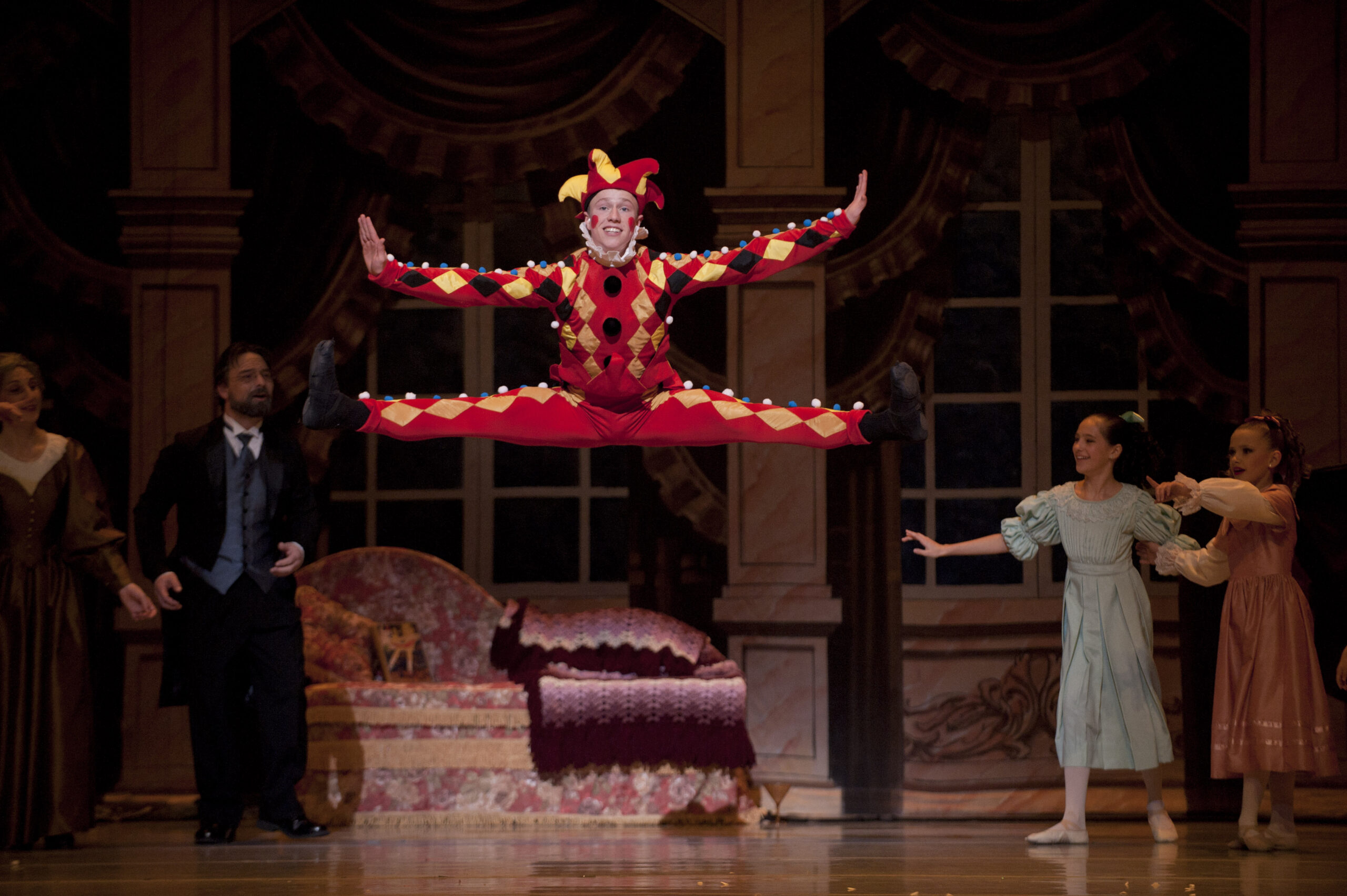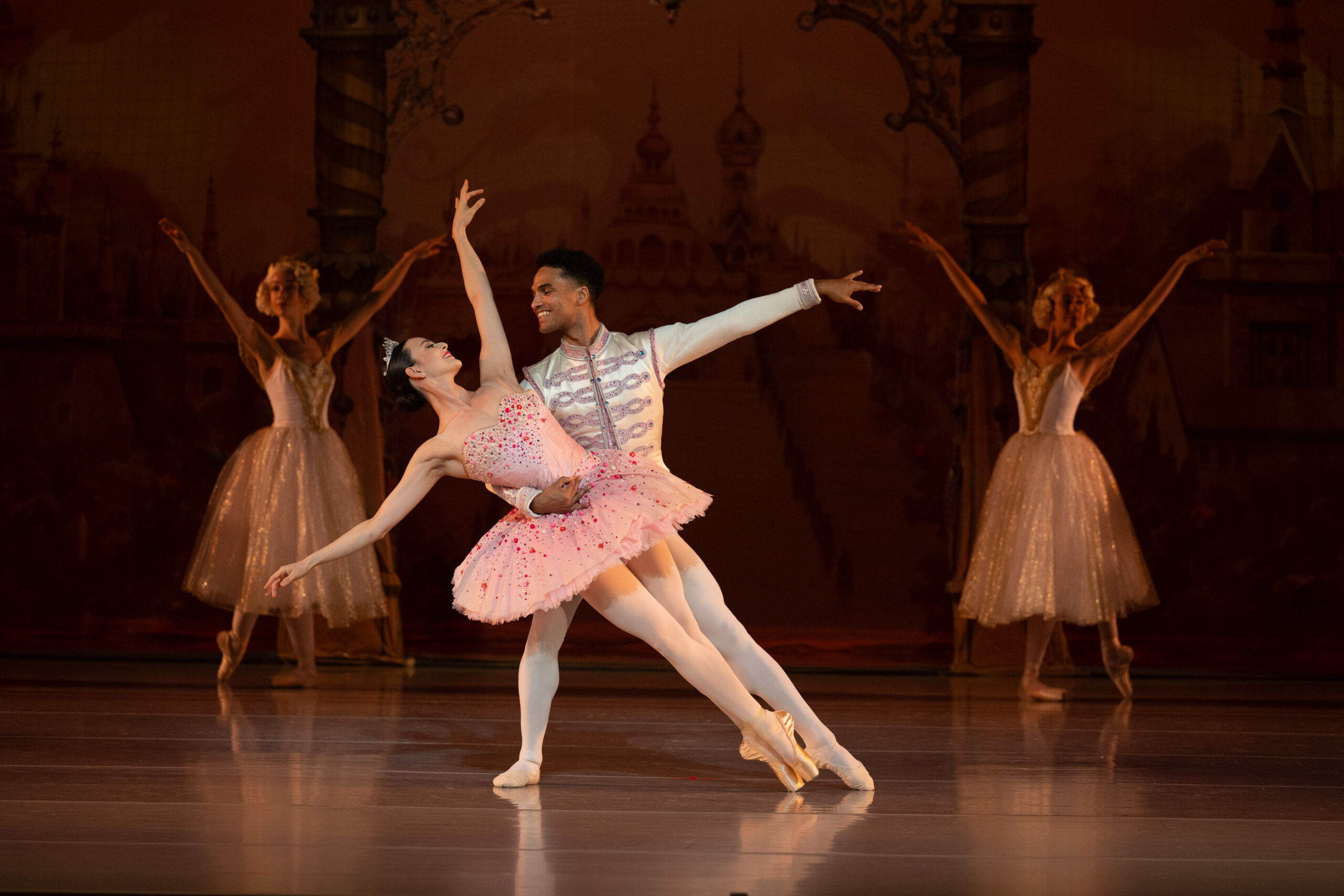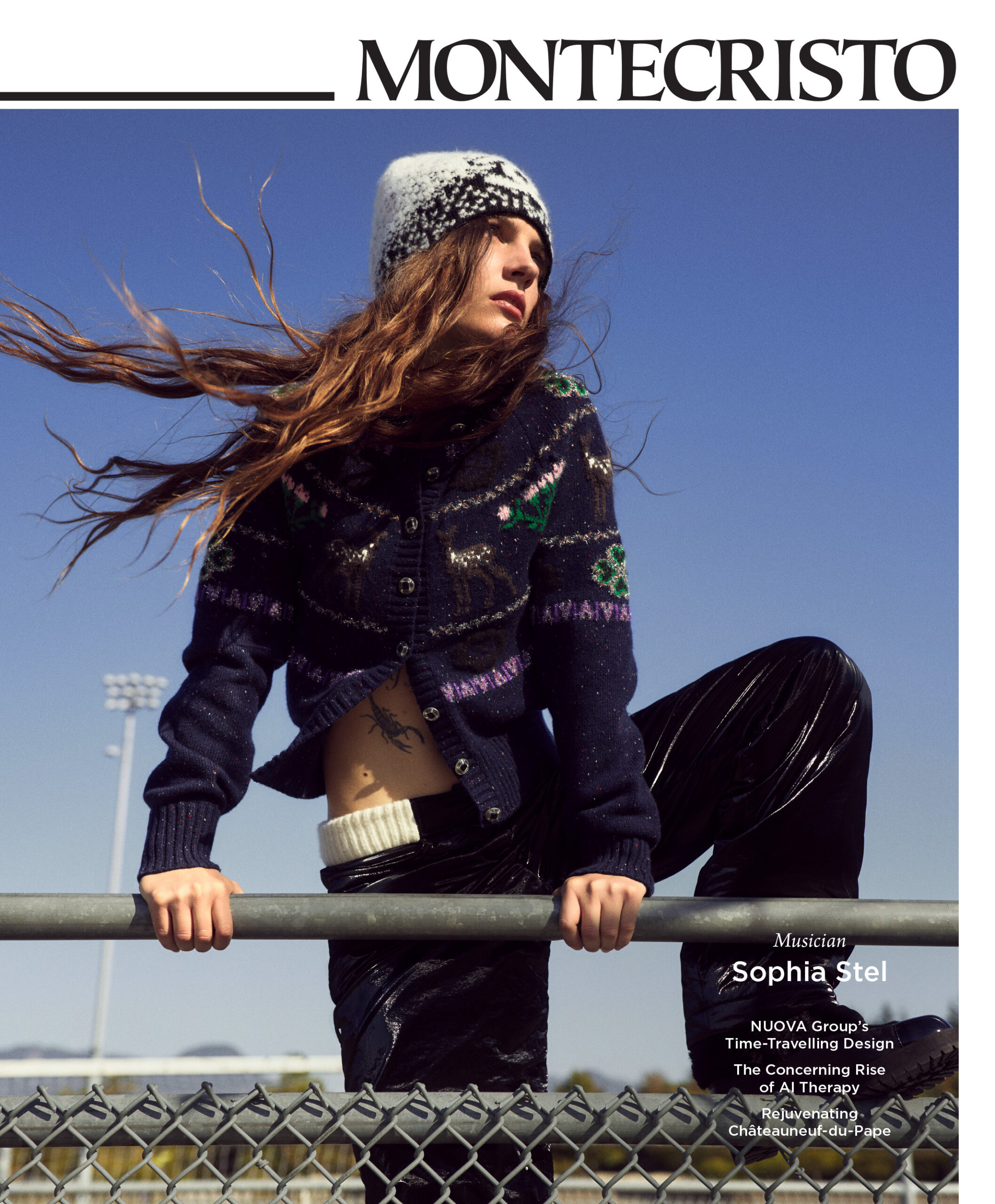Benjamin Freemantle’s heart is full. He’s been preparing for his turn as the Cavalier Prince in Goh Ballet’s The Nutcracker. Back in 2009, when he was just 14, he debuted as Harlequin in Goh’s inaugural rendition of the Christmas classic. For Freemantle, it was an important moment that made him realize that this—dancing—was what he wanted to do.
“It was my first big ballet production that I ever got to be in,” he says now. “It was such a joyous experience. But what I really loved,” he adds, “was the dancers and getting to meet that group of people.” Freemantle remembers looking at the principal dancers, particularly the male ones, with awe—he was one of the only boys at his dance school. Being surrounded by peers who had their eyes set on similar professional aspirations, it all felt so exciting. “I really liked the work, I liked the ballet, I liked the environment, I liked the people I got to work with,” he says. “And I genuinely liked being around the studio all day, coming in and out for rehearsal, doing the full runs.”
Since then, Freemantle has become one of today’s most sought-after dancers—first as a principal at the San Francisco Ballet and now an independent dance artist based in New York. But coming home to The Nutcracker marks a significant milestone as it brings him back to where it all began.
Freemantle’s dance journey started not with ballet but with Irish dance. He quickly emerged as one of the top-ranked Irish dancers in Western Canada, until, at 12, he decided to pursue other styles of movement. He enrolled at the Caulfield School of Dance, a prestigious academy in Port Moody led by founder and artistic director Cori Caulfield, which Freemantle credits with giving him a firm foundation in ballet. He loved the technical side, like barre, but it was the turns, tricks, and jumps that captured his attention the most.
“I think it was the one time where I felt that flow state,” Freemantle reflects. “And I think that’s really what drew me into it, because I just felt like I was there doing this. As an adult now, that’s my most important thing: just to be present and to be where I am when I am. And I think dance has always been that connection point for me, to be able to find groundedness.”

Benjamin Freemantle as Jester in Goh Ballet’s 2010 production of The Nutcracker. Photo by David Cooper.
While naturally gifted, Freemantle worked hard on technique and participated in intensives and competitions over the years, finding support and encouragement from mentors and the community around him. He soon caught the eye of the San Francisco Ballet and was offered a scholarship. His work ethic and drive continued in California, and Freemantle stood out for his lyricism and exuberance in productions like Onegin, Cinderella, and Swan Lake. Dance Magazine, the industry’s leading publication, named him among its 25 to Watch, comparing the young dancer to Fred Astaire and Gene Kelly. At 26, after over a decade in San Francisco, working his way through the corps de ballet, being promoted to soloist, and landing the coveted principal spot at the company, Freemantle was ready for his next step: New York City.
The move was a decision he made for himself. It was time to be an artist on his own terms. “While I love ballet,” Freemantle says, “I had so many other artistic and creative impulses that I wanted to explore.” He wanted to experience more and try on other hats. Growing up, he’d trained in musical theatre, jazz, tap, and hip-hop. He’d acted in plays and written creative works of his own. He found he looked good wearing all kinds. Now, he’s danced in such films as Maestro, appeared in New York Fashion Week, performed as a guest at companies including in Paris, and auditioned on Broadway. He also teaches classes at the iconic Steps on Broadway studio.
“I really love the life that I created for myself through my own choices and my own actions,” Freemantle says. Having the freedom to express himself in new ways has allowed him to grow as an artist with greater depth—and, inevitably, become a better and more confident ballet dancer. “It feels like I’ve had other life experiences outside of just ballet,” he says of the chance to expand and experiment elsewhere. “I’m just not as stressed as I was, doing it. I’m actually having fun and enjoying it.”
He adds, “I think the most freeing part of the freelance journey has been the ability to say no and the ability to say yes at the same time, and to choose where I put my abilities and my talents, but also my energy and my time, and thinking, like, ‘What’s actually going to fill my cup right now?’ Rather than, ‘What’s a quota I need to meet?’ Because that’s no longer how I like to live my life. I really want to find enriching experiences—like coming home to Vancouver for the Goh Ballet.”

The Sugar Plum Fairy and Cavalier Prince in Goh Ballet’s The Nutcracker in 2023. Photo by David Cooper.
The Nutcracker was something Freemantle pursued himself. Part of it was wanting to spend Christmas with his family, which he hadn’t been able to do in 14 years due to his dance commitments. Just as important was acknowledging the magic of his story, the full-circle moment that dancing in this particular production would represent. It would also mark his first performance in Canada since leaving for San Francisco as a teen—and in the Queen Elizabeth Theatre, no less, a stage he’s always wanted to dance on. He reached out to Goh Ballet with the pitch—it resonated with the organization, too.
These past few years have empowered Freemantle to find a renewed sense of joy in his work, which he’s looking forward to bringing to his portrayal of the Cavalier Prince.
“I’m just more human,” he says. “I feel like I’m giving a more full performance with more human qualities rather than just trying to show you that I have a nice line and a good foot and I can lift a girl above my head. It’s like, but why? Why are you lifting the girl? Where’s that feeling coming from? What are we celebrating?”
For Freemantle, it’s not about perfect technical execution but rather understanding the intention behind the movement to completely embody the character—in order to let go and just dance. “We’re just telling a story,” he says, “and at the end of the day, we’re all just playing make believe on stage and getting lost in that world and allowing the audience to get lost in that world. That’s the goal. That’s what we’re trying to do here: to have a feeling come across.”
Read more performing arts stories.









